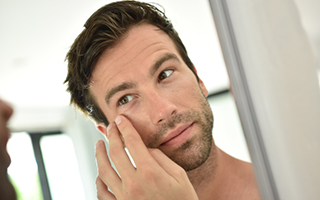As we age, a number of changes in our facial skin can affect its appearance, making us look older, fatigued, and anxious. In the past, the only effective options were painful, surgical, and entailed a prolonged recovery period. However, in the last few years, modern medicine has made tremendous advances in developing safe and potent dermal fillers. Philadelphia-area board-certified dermatologist Victoria A. Cirillo-Hyland, MD explains what these non-surgical treatments are, and how they can help maintain a youthful, refreshed appearance.
Dermal fillers, also referred to as soft tissue fillers, are one of the most frequently used cosmetic treatments in the United States. The American Society of Plastic Surgeons has reported that dermal fillers are the second most popular minimally invasive cosmetic procedure of 2016, with about 2.6 million filler procedures performed.
Most dermal fillers are gel-like substances that are injected with a fine needle or cannula beneath the skin to “fill” it out, or plump the area to the point where a fold, wrinkle, or depression in the skin diminishes dramatically.A wide range of concerns related to facial aging can be significantly improved with the use of dermal fillers. Treating multiple areas of the face with dermal fillers is often referred to as the “liquid facelift”. Dermal fillers are most commonly used for:
- Filling out deep creases that run from either the sides of the nose to the mouth (nasolabial folds, also called “parentheses lines” or “laugh lines”) or those from the corners of the lips down to the jawline (marionette lines)
- Adding a volume boost to thinning lips and/or smoothing perioral wrinkles or vertical lip lines often referred to as the “barcode lip”
- Augmenting sagging or flattened cheeks to restore youthful fullness and enhance the contours of the cheekbones, which also reduces the jowls by lifting the cheeks
- Filling out the lower cheeks or temples to reduce the appearance of gauntness
- Filling out depressions or hollows under the eyes
- Softening indented acne or chicken pox scars to better blend with the surrounding skin
- Restoring the volume to aged hands and shrinking earlobes
Dermal fillers can be made from naturally or synthetically derived materials. Some, such as hyaluronic acid fillers, may be synthetically made, but can closely resemble substances naturally found in the body.
Some of the most popular and effective types of FDA-approved materials for dermal fillers used by dermatologists such as Dr. Cirillo-Hyland include:
- Hyaluronic acid (such as the Juvederm®, Belotero®, and Restylane® products)
- Calcium hydroxylapatite (such as Radiesse®)
- Poly-L-lactic acid (such as Sculptra® Aesthetic)
Certain dermal filler “families”, such as the hyaluronic acid ones mentioned above, come in different formulations to further tailor treatment protocols for each patient, and to target specific areas more appropriately. For example, a different texture of dermal filler may be required for the lips, as compared to nasolabial folds or cheeks.
Depending upon which formulation of dermal filler is used and how each patient reacts to it, the results from a treatment can last anywhere between six months to two years.
Dermal fillers are not to be confused with neuromodulators such as BOTOX®. While both types of treatment are wrinkle-reducing and administered by injection, they work differently. BOTOX® does not fill or plump like dermal fillers do, but targets muscle movements that result in wrinkle formation.
While dermal fillers and neuromodulators are often used for different concerns, a licensed, experienced, and trained injector can use both products in conjunction to create a markedly younger-looking, refreshed appearance.
Dr. Cirillo-Hyland and her team at Cirillo Cosmetic Dermatology Spa have extensive experience in both dermal fillers and neuromodulators. To learn more about these treatments and determine which may be right for you, contact the practice online or by phone at 610.525.5029 to request a consultation.
Original Article by Aesthetics Today


-updt.png)






















